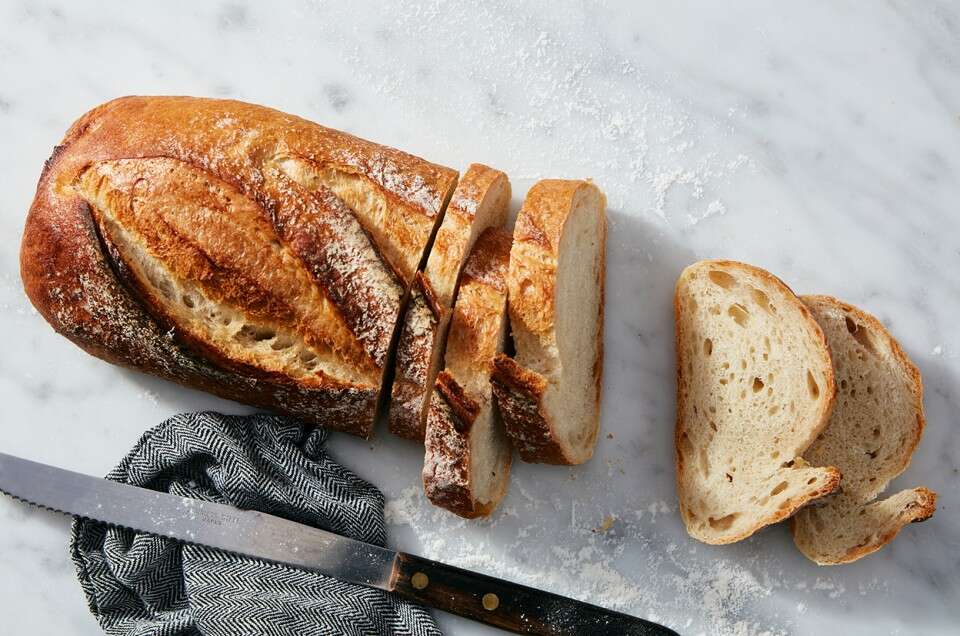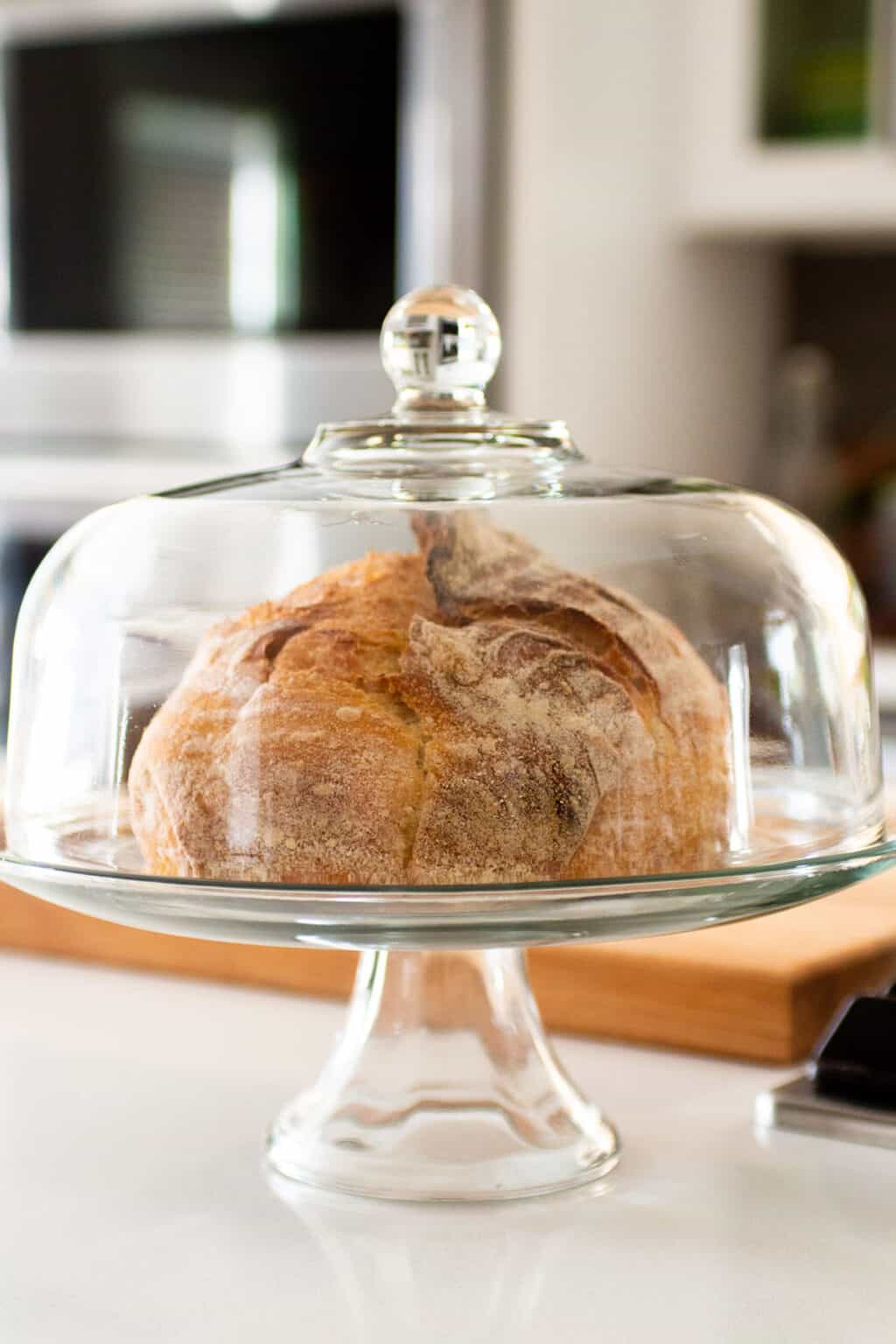How to Store Sourdough Bread: Preserving Flavor and Nutrition

In the world of bread, sourdough stands as a beloved and time-honored creation. Crafted through the magic of fermentation, sourdough bread captivates with its distinct flavor, chewy texture, and potential health benefits. Yet, to truly savor the goodness of this artisanal delight, understanding how to store sourdough bread properly is essential. Join us as we explore the art of sourdough bread-making, its nutritional advantages, and the importance of proper storage to maintain its quality.
The Art of Sourdough Bread-Making
The Essence of Sourdough
Sourdough bread is a type of bread made using naturally occurring wild yeast and bacteria present in flour and the environment. Unlike commercial yeast, which offers a rapid rise, sourdough employs a slower fermentation process. This results in a bread that boasts a complex flavor profile, a chewy crust, and an airy crumb.
Crafting Sourdough Bread
The process of crafting sourdough bread is an intricate dance between flour, water, wild yeast, and lactic acid bacteria. This dance begins with creating a starter – a mixture of flour and water that captures wild yeast and bacteria from the surroundings. Over days or weeks, the starter is fed, nurtured, and becomes a lively mixture of microorganisms.
The starter is then combined with more flour, water, and salt to create the dough. Through a series of gentle folds and rests, the dough develops its structure and flavor. As it ferments and rises, the dough transforms into a living entity, ready to be shaped, proofed, and finally baked to perfection.
Nutritional Advantages of Sourdough Bread
Digestibility and Nutrient Bioavailability
The long fermentation process involved in making sourdough bread leads to the breakdown of certain compounds that can hinder nutrient absorption. This process enhances the bioavailability of nutrients, making them more accessible for digestion and absorption.
Potential for Lower Glycemic Index
Sourdough bread often has a lower glycemic index compared to commercial breads. The fermentation process and the presence of lactic acid bacteria may slow down the digestion and absorption of carbohydrates, leading to more stable blood sugar levels.
Rich in Prebiotics and Probiotics
The beneficial bacteria developed during the fermentation of sourdough can act as both prebiotics (food for beneficial gut bacteria) and probiotics (live beneficial bacteria). These elements contribute to a healthier gut microbiome and may offer immune and digestive benefits.
Mineral Enhancement
The fermentation process can increase the availability of certain minerals in sourdough bread, making them more absorbable. This includes minerals like magnesium, zinc, and iron.
Why Properly Storing Sourdough Bread Matters
Maintaining Freshness and Quality
Sourdough bread's exceptional taste and texture can be attributed to its slow fermentation and natural ingredients. To preserve these qualities, proper storage is crucial. Storing sourdough bread correctly helps maintain its crustiness, moist crumb, and complex flavors.
Preventing Staling
Sourdough bread has a higher moisture content than many commercial breads. As a result, it can be more susceptible to staling if not stored properly. Staling occurs when the moisture in the bread's crumb moves to the crust, causing it to become dry and hard.
Protecting Against Mold
Like any bread, sourdough bread is prone to mold growth if exposed to excessive moisture. Proper storage helps extend the shelf life and reduces the risk of spoilage.
How to Store Sourdough Bread
1. Store at Room Temperature
If you plan to consume the bread within a day or two, storing it at room temperature in a paper bag or bread box is ideal. Avoid plastic bags, as they can trap moisture and encourage mold growth.

2. Freeze for Longer Storage
To extend the shelf life of sourdough bread, consider slicing it and placing it in an airtight container before freezing. Thaw individual slices as needed by toasting them directly from the freezer.
3. Protect the Crust
Preserve the crust's integrity by storing sourdough bread upside down. This prevents moisture from migrating to the crust and keeps it crisp.
Mastering Culinary Creativity
Sourdough bread's allure extends beyond its process and nutritional benefits; it's a testament to the artisanal craft that transforms humble ingredients into a symphony of flavor and texture. As you navigate the realm of sourdough bread, here are a few insights to guide you:
1. The Perfect Toast
Enjoying sourdough in its simplest form is often a revelation. A classic toast, whether slathered with butter, drizzled with olive oil, or spread with your favorite jam, allows the bread's texture and flavor to shine.
2. Open-Faced Sandwiches
Use sourdough as the foundation for open-faced sandwiches that highlight fresh and flavorful ingredients. Top slices with smashed avocado, sliced tomatoes, and a sprinkle of flaky sea salt for a satisfying treat.
3. Panzanella Salad
Transform stale sourdough into a panzanella salad by combining torn bread with ripe tomatoes, cucumbers, red onions, fresh basil, and a simple vinaigrette. The bread's chewy texture absorbs the flavors, creating a harmonious medley.
4. Crostini Creations
Slice sourdough into thin rounds, toast until crisp, and use them as crostini. Top with ricotta and honey, roasted vegetables and goat cheese, or smoked salmon and dill for elegant appetizers.
5. Savory Bread Pudding
Turn leftover sourdough into a savory bread pudding by mixing torn bread with eggs, milk, cheese, and your favorite vegetables or protein. Bake until golden and puffed for a hearty and satisfying dish.
6. French Toast Feast
Elevate your breakfast with sourdough French toast. Soak slices in a mixture of beaten eggs, milk, vanilla, and cinnamon, then cook until golden. Serve with fresh fruit, a dusting of powdered sugar, and a drizzle of maple syrup.
7. Gourmet Grilled Cheese
Craft a gourmet grilled cheese sandwich using sourdough as the base. Layer with a combination of melting cheeses, caramelized onions, and perhaps a touch of fig jam for a delightful twist on a classic.
Embracing Culinary Creativity
Sourdough bread's versatility invites culinary creativity that knows no bounds. Its chewy crumb, crusty exterior, and nuanced flavor profile make it a canvas for countless culinary possibilities. As you explore these creations, remember that the essence of sourdough lies not only in its ability to complement and elevate flavors but also in the care and craftsmanship that go into its making.
Crafting Culinary Experiences with Sourdough
Nurturing Storage Techniques
As you embark on your sourdough journey, remember that the essence of savoring this artisanal delight extends to proper storage. Whether you're enjoying a freshly baked loaf or savoring slices from the freezer, safeguarding its crustiness, moist crumb, and intricate flavors ensures that each bite transports you to a world of culinary enchantment.
Sourdough bread's journey, from starter to slice, encapsulates a symphony of flavors, textures, and traditions. Through understanding the art of its creation, appreciating its nutritional advantages, and mastering the science of storage, you're empowered to embrace the charm of sourdough bread in its entirety. Whether it graces your breakfast table, anchors your lunchtime sandwich, or adds flair to your dinner spread, sourdough's essence resonates with the joy of creating, sharing, and savoring culinary experiences that enrich both the palate and the soul.
Want more new food ideas? Check out "What does Natto taste like?"